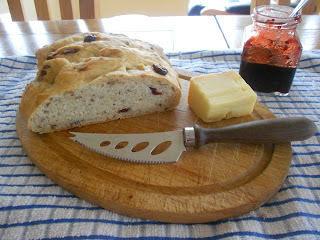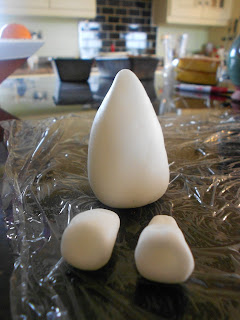One crosses a line when one starts making vegetables out of sugar paste. There is something insanely wrong about it. You're taking something healthy and natural and replicating it with pure sugar and food colouring. But boy do they look cute! In fact they are so shiny and orangey that they make me want to eat actual carrots... Oh my, maybe I've figured out the greatest parenting trick of the 21st Century! Make little sugar replicas of all the good stuff they won't eat so that they start feeling positive when they see the real thing. What is that called - positive reinforcement? Reverse psychology? Brainwashing? I'll stock up on sugarpaste and start clinical trials right away...
Carrot cake is a sort of alien in the cake world. We have accepted it's weird vegetable-in-cake premise much more readily than say, beetroot which is also delicious but which people would instantly turn their nose up at. It is paving the way for vegetable domination of the cake world, one cafe at a time...
I don't like using oil in cakes period because I can always taste the oil. I know that so many famous bakeries and bakers use oil in their carrot cakes, in fact I was hard pressed to find a recipe that didn't, so I may be the only one who finds that greasy after taste even while using sunflower oil which is recommended by BBC Good Food as an oil to use in baking. It's butter all the way for me and even better this recipe from (my hero) Bravetart uses brown butter which I have adored since I used it to make pancake muffins here. It adds a dark caramel type flavour to the butter.
Makes 18 large cupcakes
200g unsalted butter
175g caster sugar
85g brown sugar
1/2 tbsp baking soda
3/4 tsp baking powder
3/4 tsp salt
1 tsp cinnamon
3/4 tsp ginger
1/4 tsp cloves, mace and nutmeg each
3 eggs
200g wholemeal flour
1/2 tbsp vanilla extract
400g grated carrot
200g nuts (like pecans, pistachios or hazelnuts)
1. Put the butter in a small pan and melt gently. Once melted jack up the heat to medium and allow to sizzle until the bottom of the pan goes slightly brown and a foam forms. Allow to cook until the pan goes silent and there is a caramel smell. Remove from the heat and allow to cool.
2. Beat the eggs, sugars, baking soda, baking powder salt and spices in a bowl for 4-5 minutes until the eggs have lightened and coloured. Mix in the vanilla and with the beater going pour in the butter in a steady stream.
3. Pour in the flour all in one go and fold gently until just combined. Add the carrots and nuts and barely fold in.
4. Make at 180oC for 15-18 minutes until a skewer comes out clean.
For the mini carrots I used tinted sugarpaste and angelica for the greens.








































